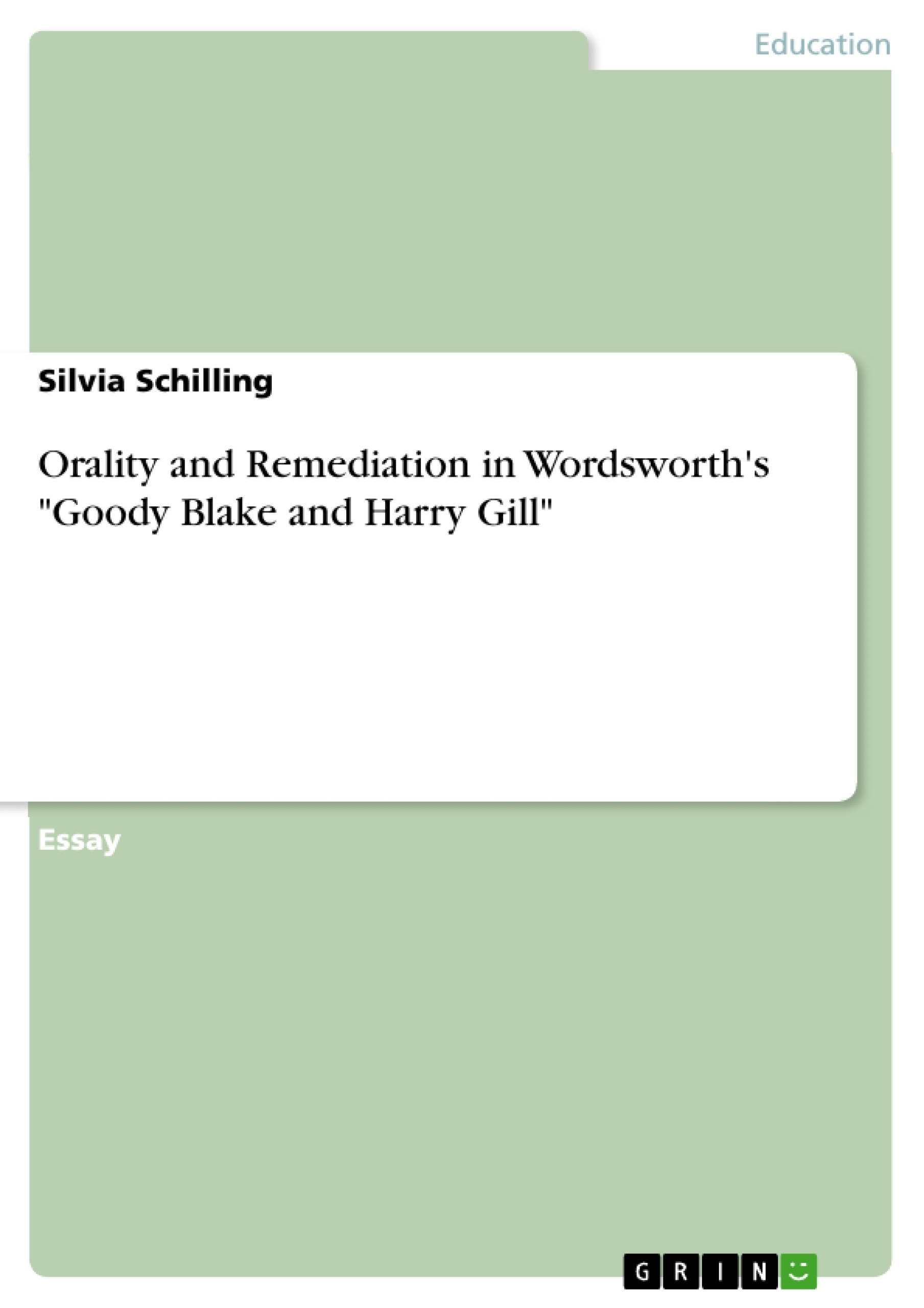This essay examines the relationship between literature and orality in the poem "Goody Blake and Harry Gill", which is a part of William Wordsworth´s and Samuel Taylor Coleridge´s collection "Lyrical Ballads". As stated by Wordsworth himself in the preface of the collection, this poem is "narrated as a Ballad" and thus combines prominent features of written and oral culture. In addition to orality, the concept of remediation is discussed.
Inhaltsverzeichnis (Table of Contents)
- Poetry and Voice – and, more generally, Literature and Orality
- The Concepts of Orality and Remediation in \"Goody Blake and Harry Gill\"
- References to Remediation within the Poem
- Orality in \"Goody Blake and Harry Gill\" and its relation to the Importance of Voice, the Oral Community and the Power of Words
- Imagination as a Key Feature of Orality
- Conclusion
Zielsetzung und Themenschwerpunkte (Objectives and Key Themes)
This essay aims to analyze William Wordsworth's "Goody Blake and Harry Gill" with regard to the concepts of orality and remediation. The essay explores how the poem embodies the interplay between spoken and written language, and how it functions as a work of literary remediation.
- Orality and its role in literature
- The concept of remediation and its application to "Goody Blake and Harry Gill"
- The significance of voice, the oral community, and the power of words in the poem
- The role of imagination in the interaction between orality and literature
- The political and social implications of orality and remediation in the poem
Zusammenfassung der Kapitel (Chapter Summaries)
The first section of the essay introduces the intertwined relationship between poetry, voice, and orality in both cultural history and contemporary contexts. It highlights the inherent connection between the act of speaking and the written word, particularly evident in the genre of poetry.
The second section delves into the concepts of orality and remediation. Orality refers to the qualities of verbal communication, while remediation describes the adaptation of representational practices from one medium to another. The essay then examines how these concepts are intertwined in the context of literature, exploring the transformation of oral material into written forms.
The third section focuses on the poem's subtitle "A True Story" and explores the poem's history of remediation. The essay argues that the story existed in oral form before being documented in various written forms, and then re-oralized. This cycle of remediation highlights the poem's self-consciousness regarding its own history and its connection to oral traditions.
The fourth section analyzes the poem's portrayal of orality through the use of speech acts, verbs related to speaking and listening, and the emphasis on the power of words. The essay discusses how the poem uses these elements to explore themes of social inequality, community, and the political implications of voice.
The fifth section discusses the role of imagination in the poem, emphasizing how orality and remediation evoke an "audiovisual hallucination" in the reader. The essay examines how the poem utilizes orality effects to enhance imagination and create a compelling sensory experience.
Schlüsselwörter (Keywords)
The essay focuses on the key concepts of orality, remediation, voice, the oral community, imagination, and the ballad form. It explores how these concepts intersect in William Wordsworth's "Goody Blake and Harry Gill" to highlight the importance of orality and its influence on literature, culture, and human experience.
- Quote paper
- Silvia Schilling (Author), 2018, Orality and Remediation in Wordsworth's "Goody Blake and Harry Gill", Munich, GRIN Verlag, https://www.grin.com/document/520591




